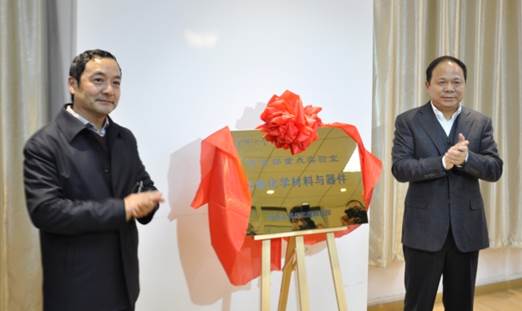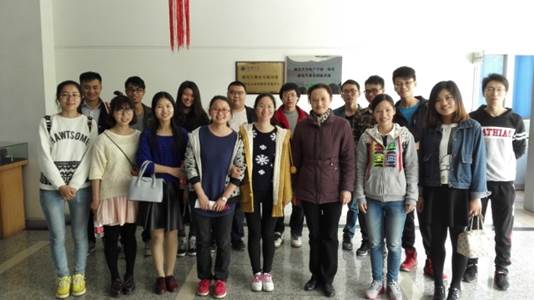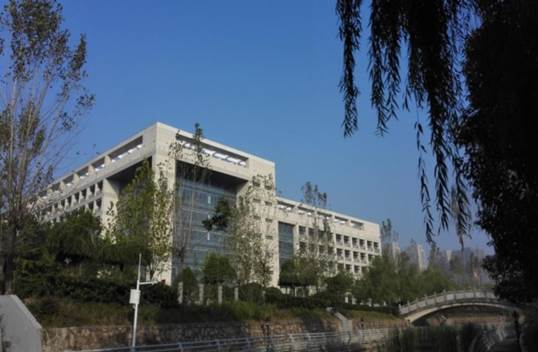The Key Laboratory of Optoelectronic Chemical Materials and Devices, based at Jianghan University, was approved by the Ministry of Education of China in 2014. The Key Laboratory was founded to solve key technology bottlenecks and develop common technologies in the Photoelectrochemical Materials and Devices industries. It occupies a space of 5000 square meters and has been supplied with more than RMB 50 million in state of the art equipment and instruments to engage in this research. The Laboratory user group is comprised of over 60 members including 40 faculties and more than 23 occasional researchers. Currently, the Laboratory is focusing on building platforms in the following three research fields: (1) Flexible display materials and technology; (2) Flexible battery materials and devices; (3) Environmental friendly photoelectric materials. The laboratory has a close working relationship with industry and has worked in cooperation with many companies including Huashuo Technology, Wuhan Tianma Microelectronics, Lenovo (Wuhan), and Wuhan Huaxing Optoelectronics Technology. These collaborations have been very fruitful and generated considerable economic benefits in the comparatively short time the Laboratory has been in operation.

Research Fields
Flexible display materials and technologies.
Chemical materials and devices for flexible battery.
Optoelectronic chemical materials for biomedical application.
Environmental friendly process for optoelectronic chemical materials.
Talent Cultivation
To be a bridge for connecting for applied basic research and engineering development in optoelectronic chemicals industry. To accelerate the transformation of lab research to industrial production.
To be committed to acquiring key materials and technologies of independent intellectual property rights and independence innovation, leading the development of scientific and technological innovation in photoelectric chemical materials and devices industry.
To be oriented to the industrial demand, the lab aims at the cutting-edge technology and research focuses on the miniaturization, flexibility and environmental friendliness of optical electro chemical products and devices.
The University-Industry Cooperation is promoted by the Lab, which has been built as a radiant base to provide new technologies and an important foundation to train and produce high-level technical personnel.
The Key Lab of Optoelectronic chemical Materials and Devices of Ministry of Education attaches great importance to talent cultivation, and has built Master and Postdoctoral Station.
Program for master degree
Material science and engineering
Environmental Science and Engineering
Chemical engineering and technology
Postdoctoral research station
Post - doctoral innovation practice base of Wuhan city

Facilities
The Key Lab of opticalelectrochemical Materials and Devices of Ministry of Education has been invested ¥ 60 million supported by Center, Jianghan University and Wuhan City government. The instruments and equipments in the center are including Laser confocal raman spectrometer, field emission scanning electron microscope (FE-SEM),Atomic Force Microscope (AFM), transmission Electron Microscope (TEM), nuclear magnetic resonance spectrometer (NMR), inverted fluorescence microscope, X-ray diffractometer (XRD), picosecond fluorescence lifetime spectrometer, micro TOF-Q II ESI-Q-ToF LC/MS/MS spectrometer, fluorescence lifetime and steady-state fluorescence spectrometer, inductively coupled plasma mass spectrometer(ICP-MS) , infrared-thermal weight loss combined instrument(FTIR-TG), electrochemical workstation, high performance liquid chromatography (HPLC), magnetron sputtering coating machine, reactive ion etching machine, micro-combustion calorimeter(MCC).

Instruments Use Rules of Central Lab
The instruments are operated and managed by professional, which serve for researchers.
Operation of each instrument must follow the rules strictly, and not allow anyone to use the computer of the equipment to do work unrelated to the function of the instrument.
The one, who send the samples, must fill out the use record chart which includes test items, the number (or cost) and signature, when you finish using the instrument.
If the equipment fails, the one shall promptly notify the person in charge, and the operator can not handle by oneself.
The manual for each equipment, the relevant materials are saved in a fixed place,and please put them back after you’ve read them, but do not carry away.
The breakdown, maintenance and solving process of the instrument shall be documented.

